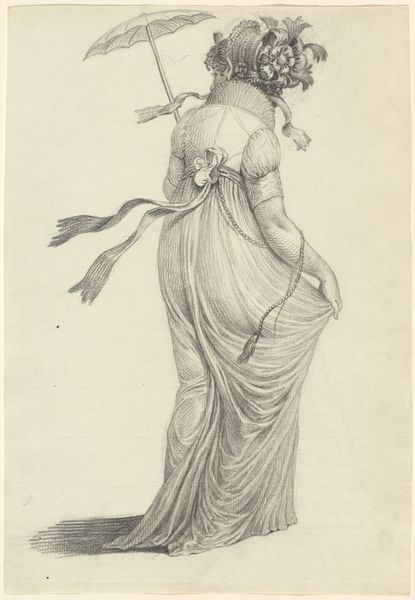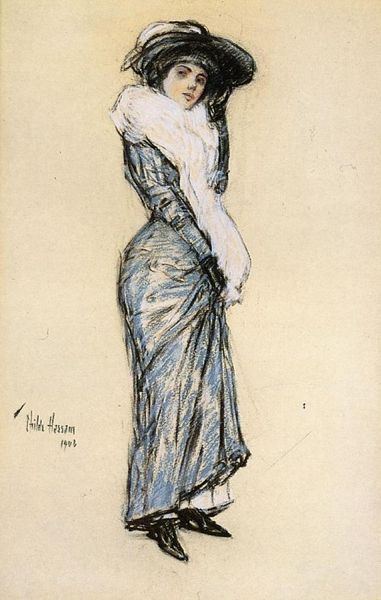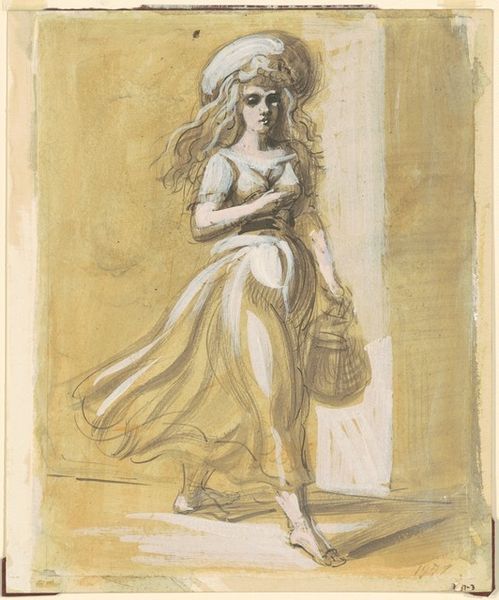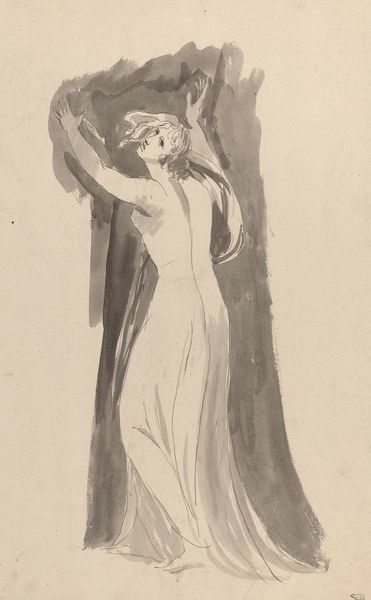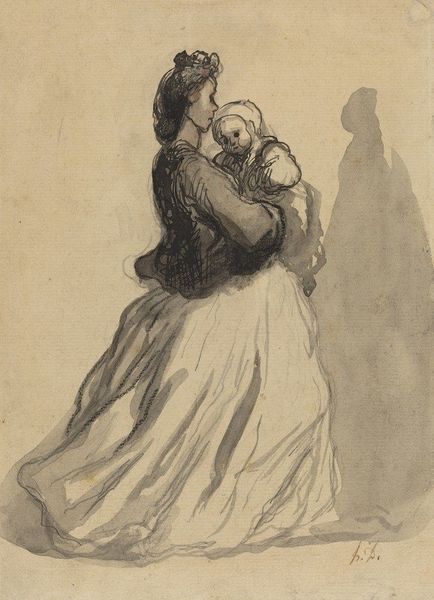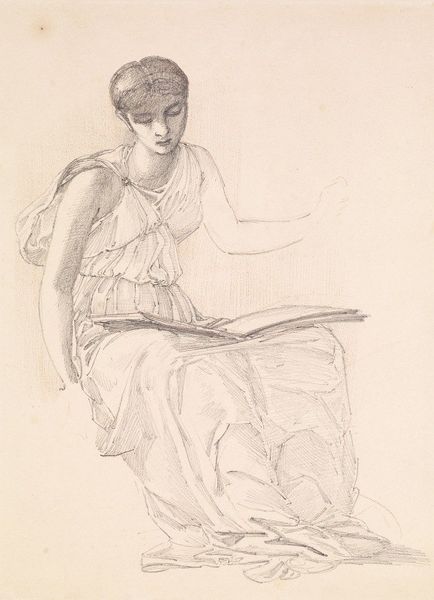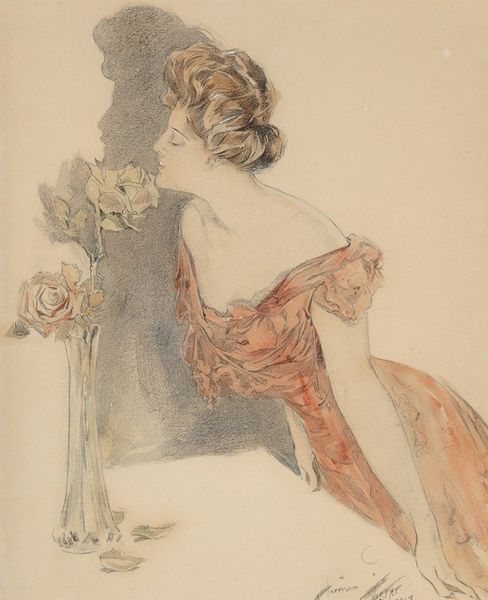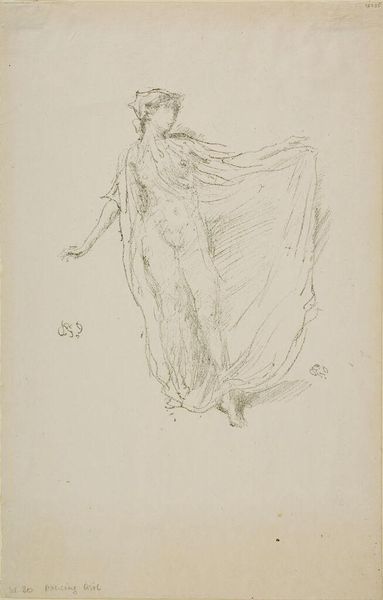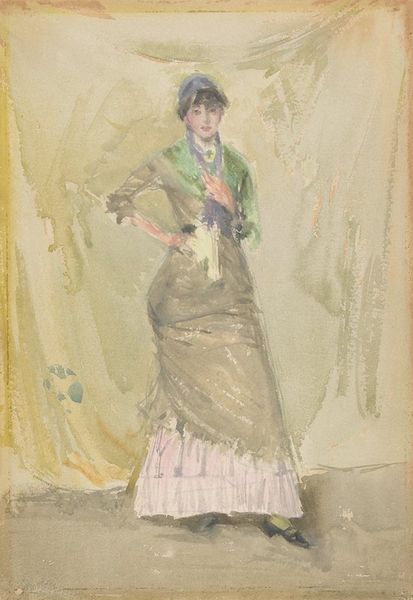
Allegory of Music, sketch for the project of the stage curtain of the Słowacki Theatre in Kraków c. 1892
0:00
0:00
Copyright: Public Domain: Artvee
Editor: So this is Henryk Siemiradzki's "Allegory of Music, sketch for the project of the stage curtain of the Słowacki Theatre in Kraków" from around 1892. It appears to be watercolor and drawing. I'm struck by the movement, how the fabric seems to be flowing, and the unfinished quality of the sketch itself. How do you see this piece functioning as a proposal for a stage curtain, especially considering the material choices? Curator: It's interesting to consider this sketch through a materialist lens. We can see how the choice of watercolor and drawing – relatively inexpensive and quick to execute – speaks to its function as a preliminary design. It’s not meant to be the final product but a proposal. How does the ephemeral quality of these materials, in contrast to, say, oil on canvas, influence your reading of the work's subject matter – music and allegory? Editor: That makes me think about the contrast. Music is ephemeral, so the medium seems fitting. But a stage curtain is a large, functional object, right? So how does the artist balance this ethereal quality with the practical requirements of a theatre? Curator: Precisely! Consider the social context. Siemiradzki was a celebrated academic painter. This commission represents a kind of industrial application of his artistry, shifting the "high art" of painting to serve a more populist form, theatre. The watercolor becomes a means of efficiently communicating a vision for something that will be realized on a much grander, perhaps even mass-produced, scale using possibly different techniques. The labour here is crucial to recognize. It raises the question of artistic labor versus skilled craftsmanship; are we looking at something that has become homogenized due to industry? Editor: So it's not just about the image itself, but the process and the intent behind it. The fact that this piece is an early concept, quickly drawn in watercolor, gives the viewer a more honest representation of the social and art practices of that time. Curator: Absolutely. Understanding the materials, process, and social function allows us to move beyond a simple aesthetic appreciation. We see art embedded in systems of production and consumption. Editor: This has totally changed my perception, looking at the social elements and intention beyond just my initial aesthetic interpretation! Thank you.
Comments
No comments
Be the first to comment and join the conversation on the ultimate creative platform.
